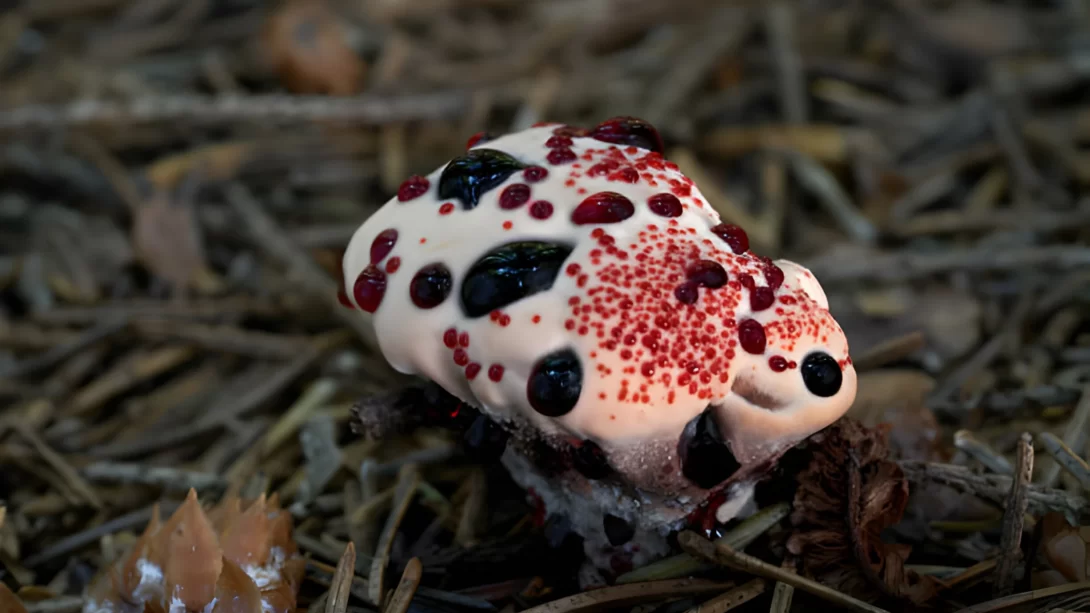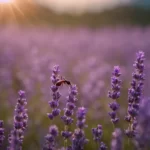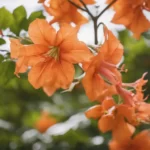The Bleeding Tooth Fungus, scientifically known as Hydnellum peckii, has long intrigued both mycologists and the public with its striking, somewhat eerie appearance. Known for its bright red “bleeding” secretions, this fungus sparks curiosity, often leading to questions about its edibility and effects on human health. This article seeks to explore what happens if one were to consume the Bleeding Tooth Fungus, delving into its characteristics, potential toxicity, and the precautions to take when encountering it.
Bleeding Tooth Fungus
Hydnellum peckii, commonly found in North American and European forests, particularly in coniferous environments, is notable for its unique and somewhat alarming appearance. In its young stages, the fungus exudes a bright red liquid from its pores, resembling blood, which eventually fades as it matures. This “bleeding” is a natural process and is part of what makes the fungus so distinctive. Ecologically, the Bleeding Tooth Fungus plays a role in forest ecosystems, often forming symbiotic relationships with coniferous trees.
Edibility and Toxicity
When it comes to the edibility of the Bleeding Tooth Fungus, the general consensus in the mycological community is that it is not toxic, but it is also not edible. The reasons for its inedibility are not due to toxicity but rather its extremely bitter taste and hard, woody texture, which are unpalatable. There is limited scientific research on the specific chemical composition of this fungus, but it is not known to contain any toxic compounds harmful to humans. However, the lack of toxicity does not make it suitable for consumption.
Reported Effects of Ingestion
Although there are no widely documented cases of poisoning or severe illness from consuming Bleeding Tooth Fungus, ingestion is strongly discouraged due to its unpalatable nature. The few accounts available, mostly anecdotal, report a very bitter taste and potential for mild stomach upset, likely due to its indigestibility. Given its unappealing flavor and texture, instances of ingestion are rare, making comprehensive data on its effects scarce.
Medical Perspective
From a medical viewpoint, consuming unidentified or non-edible fungi, including the Bleeding Tooth Fungus, poses potential health risks. While this specific fungus may not be toxic, consuming non-edible mushrooms can lead to gastrointestinal discomfort, allergic reactions, or more severe health complications, depending on the individual’s sensitivity and the quantity consumed. The broader concern in mycology and medicine is the risk of mistaking a harmful fungus for a harmless one, underscoring the importance of accurate identification before any fungal consumption.
Comparisons with Other Fungi
In the realm of fungi, edibility varies widely. Species like Morchella (morels) and Agaricus (button mushrooms) are sought after for their culinary value, while others, like Amanita phalloides (death cap), are notoriously toxic. Bleeding Tooth Fungus falls into an interesting category of being neither edible due to its taste and texture, nor dangerously toxic. This distinction is crucial for foragers and mushroom enthusiasts, as it highlights that not all non-toxic fungi are suitable for consumption, and palatability plays a significant role in determining edibility.
Safety and Foraging Guidelines
For those interested in foraging mushrooms and fungi, safety should be the top priority. Here are some essential guidelines:
- Accurate Identification: Always be sure of a mushroom’s identity before considering consumption. Use field guides, consult with experts, or join local mycological societies for assistance.
- Avoid Unknown Species: Never consume mushrooms that you cannot positively identify. Many edible mushrooms have toxic look-alikes.
- Understand Variability: Remember that edibility can vary between individuals due to allergies or sensitivities. Start with small quantities when trying a new species.
- Foraging Legality: Be aware of local regulations regarding foraging, as some areas may have restrictions to protect ecosystems.
- Environmental Awareness: Practice sustainable foraging. Overharvesting can damage natural fungal populations and their habitats.
Conclusion
In conclusion, while the Bleeding Tooth Fungus is a captivating and non-toxic species, it is not considered edible due to its bitter taste and tough texture. This fungus serves as a reminder of the diversity and complexity of mushrooms, highlighting the importance of cautious and educated foraging. Understanding the difference between toxicity and edibility is crucial in the world of mycology. Whether you are a seasoned forager or a curious observer, respecting the fungal kingdom’s boundaries ensures both personal safety and the preservation of these intriguing and vital components of our ecosystems.




